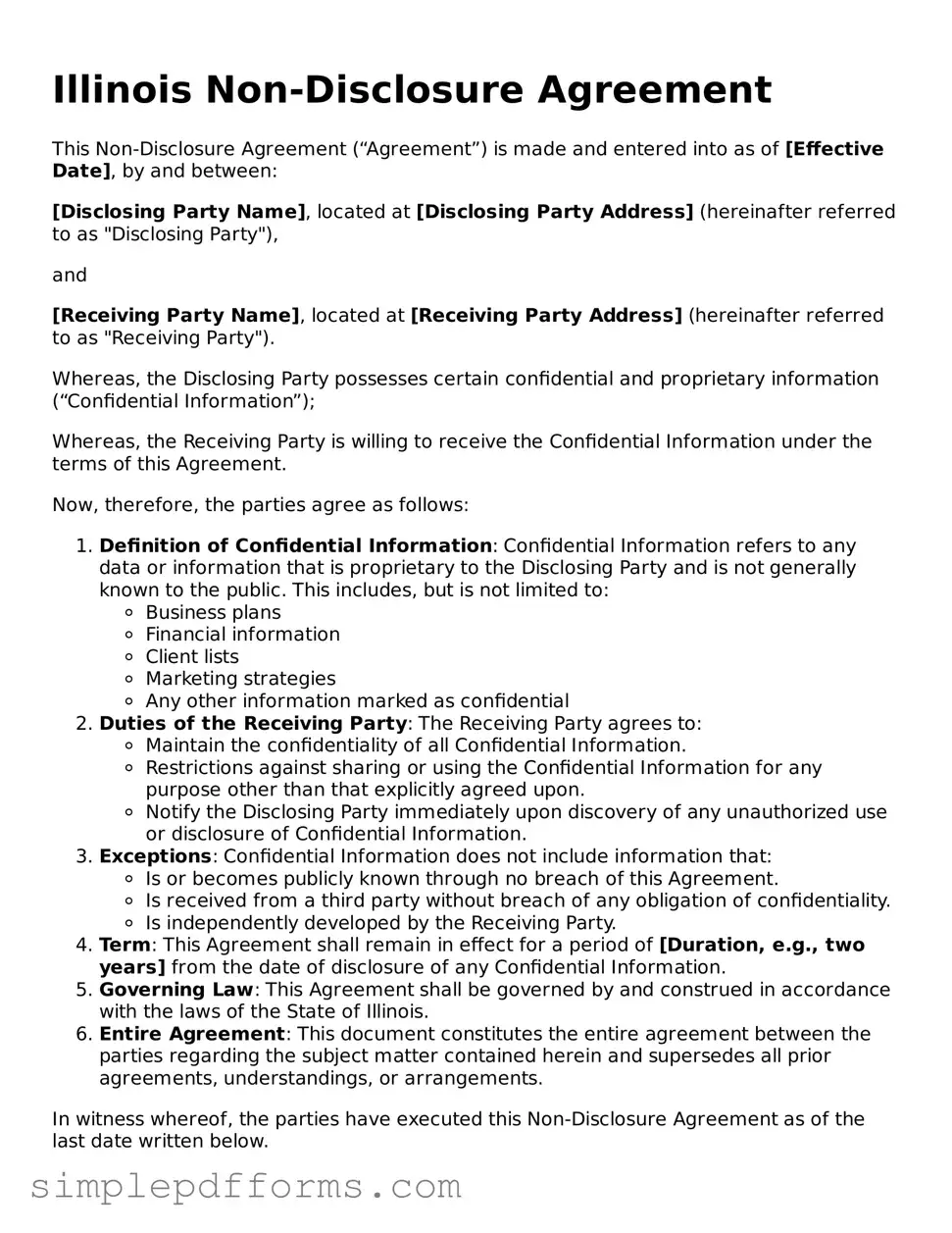Illinois Non-Disclosure Agreement
This Non-Disclosure Agreement (“Agreement”) is made and entered into as of [Effective Date], by and between:
[Disclosing Party Name], located at [Disclosing Party Address] (hereinafter referred to as "Disclosing Party"),
and
[Receiving Party Name], located at [Receiving Party Address] (hereinafter referred to as "Receiving Party").
Whereas, the Disclosing Party possesses certain confidential and proprietary information (“Confidential Information”);
Whereas, the Receiving Party is willing to receive the Confidential Information under the terms of this Agreement.
Now, therefore, the parties agree as follows:
- Definition of Confidential Information: Confidential Information refers to any data or information that is proprietary to the Disclosing Party and is not generally known to the public. This includes, but is not limited to:
- Business plans
- Financial information
- Client lists
- Marketing strategies
- Any other information marked as confidential
- Duties of the Receiving Party: The Receiving Party agrees to:
- Maintain the confidentiality of all Confidential Information.
- Restrictions against sharing or using the Confidential Information for any purpose other than that explicitly agreed upon.
- Notify the Disclosing Party immediately upon discovery of any unauthorized use or disclosure of Confidential Information.
- Exceptions: Confidential Information does not include information that:
- Is or becomes publicly known through no breach of this Agreement.
- Is received from a third party without breach of any obligation of confidentiality.
- Is independently developed by the Receiving Party.
- Term: This Agreement shall remain in effect for a period of [Duration, e.g., two years] from the date of disclosure of any Confidential Information.
- Governing Law: This Agreement shall be governed by and construed in accordance with the laws of the State of Illinois.
- Entire Agreement: This document constitutes the entire agreement between the parties regarding the subject matter contained herein and supersedes all prior agreements, understandings, or arrangements.
In witness whereof, the parties have executed this Non-Disclosure Agreement as of the last date written below.
Disclosing Party: ______________________ Date: _______________
Receiving Party: ______________________ Date: _______________
